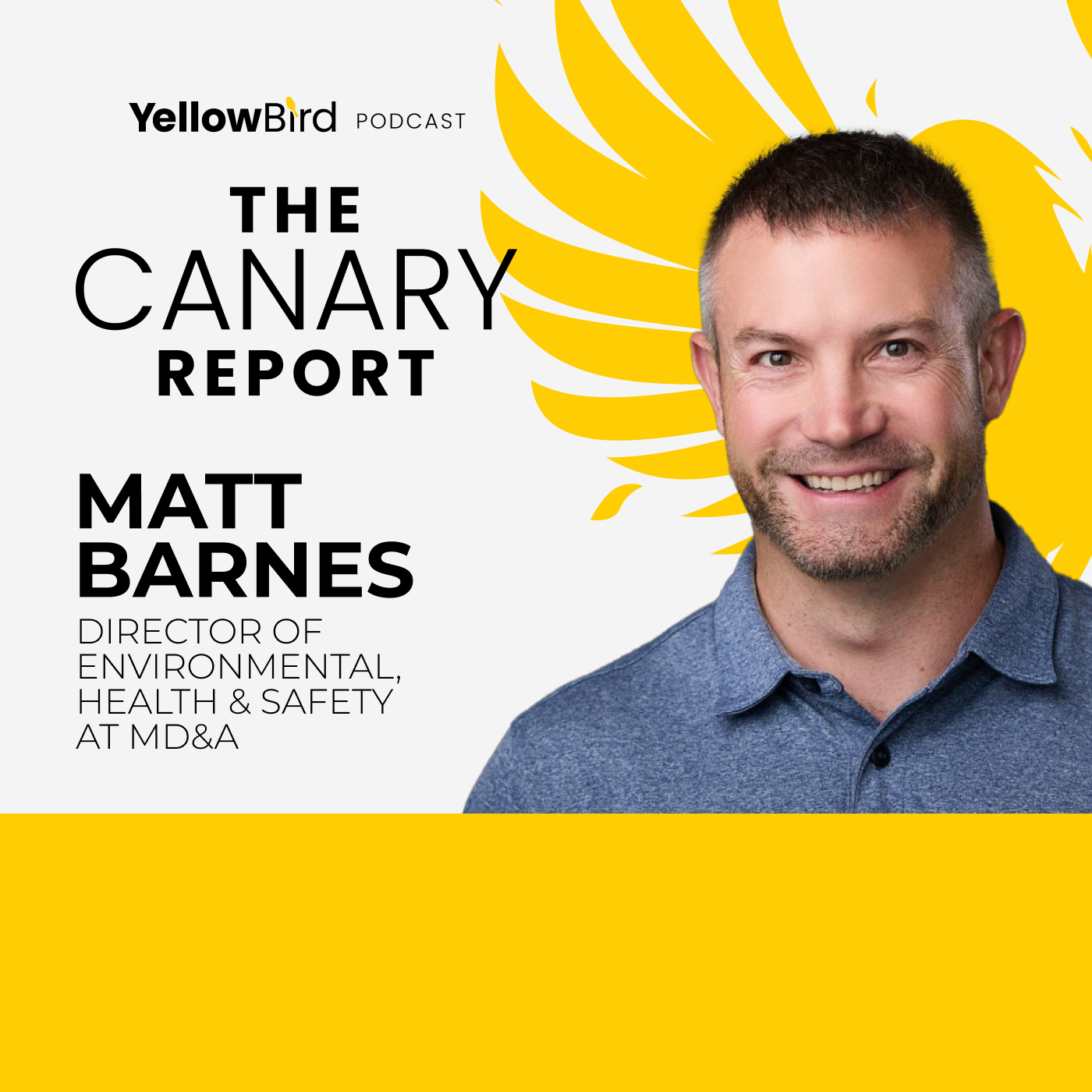Proven Safety Audits
Tailored to Your Industry
The YellowBird AI-powered platform matches you with trusted safety professionals who can deliver assessments that are accurate, efficient, and tailored to your industry.
What Happened When This Top Automotive Firm Stopped Relying on Compliance Alone
See how an automotive compliance firm used YellowBird to complete 192 Safety Walkthroughs in 28 states and launch a defensible, scalable nationwide EHS program.
Identify Risks Early with On-Site Walkthroughs
Safety Walkthrough
A Safety Walkthrough is a proactive site inspection conducted to identify hazards, ensure compliance, and engage employees in safety best practices.
A documented safety walkthrough demonstrates proactive hazard identification, which can reduce liability, lower workers’ comp claims, and prevent OSHA citations.
When to Preform a Safety Walkthrough
● High-Risk Facilities: Quarterly (every 3 months)
● Moderate-Risk Facilities: Semi-Annual (every 6 months)
● Lower-Risk Facilities: Annually or as needed
Industries That Benefit from Safety Walkthroughs
It is valuable across multiple industries, particularly those with workplace hazards, regulatory oversight, and liability concerns:
• Manufacturing: Factories, production plants, food processing facilities
• Construction: Active job sites, infrastructure projects
• Healthcare: Hospitals, clinics, medical labs
• Energy & Utilities: Power plants, oil & gas facilities, refineries
• Retail & Warehousing: Distribution centers, large retail stores
• Transportation & Logistics – Trucking hubs, rail yards, ports
Proactively Uncover Risks
Loss Control Audit
A Loss Control Audit, also known as a Loss Prevention Audit or Risk Control Audit, is a comprehensive evaluation aimed at identifying and mitigating potential risks within an organization to prevent financial losses, enhance safety, and ensure regulatory compliance.
Implementing regular loss control audits is a proactive strategy to identify potential risks, enhance operational safety, and ensure compliance with regulatory standards, thereby safeguarding both employees and organizational assets.
When to Preform a Loss Control Audit
● High-Risk Industries: Annually at minimum
● Moderate-Risk Industries: Every 1-2 years
● Low-Risk Industries: Every 2-3 years
Industries That Benefit from Loss Control Audits
It is valuable across multiple industries, particularly those with workplace hazards, regulatory oversight, and liability concerns:
● Manufacturing: Factories, production plants, food processing facilities
● Construction: Active job sites, infrastructure projects
● Healthcare: Hospitals, clinics, medical labs
● Energy & Utilities: Power plants, oil & gas facilities, refineries
● Retail & Warehousing: Distribution centers, large retail stores
● Transportation & Logistics: Trucking hubs, rail yards, ports
Protect Worker Health
Industrial Hygiene Assessment
Industrial hygiene assessments identify workplace environmental factors affecting worker health and safety, including chemical, physical, biological, and ergonomic hazards.
Having a documented industrial hygiene program at your site or facility helps prevent workplace illnesses, ensure regulatory compliance, and reduce liability and workers’ comp claims.
When to Preform a Industrial Hygiene Assessment
● High-Risk Industries: Annually at minimum
● Moderate-Risk Industries: Every 1-2 years
● Lower-Risk Industries: Every 2-3 years
Industries That Benefit from Industrial Hygiene Assessments
These assessments are essential in industries where employees are exposed to hazardous substances or conditions.
● Manufacturing: Factories with exposure to dust, chemicals, solvents, and noise.
● Construction: Sites with silica, asbestos, lead, and noise exposure.
● Healthcare: Hospitals, labs, and pharmaceutical plants handling biohazards and chemicals.
● Mining & Extraction: Environments with airborne contaminants like coal dust and metal fumes.
● Agriculture: Pesticide exposure, ergonomic hazards from repetitive work.
● Energy & Utilities: Oil refineries, power plants with chemical and radiation risks.
Prepare With Confidence
Mock OSHA Audit
A Mock OSHA Audit, also referred to as a Mock OSHA Inspection or OSHA Compliance Assessment, is a proactive evaluation designed to identify and rectify potential safety and health hazards. These audits help organizations ensure compliance with OSHA standards, enhance workplace safety, and mitigate the risk of citations and penalties.
While OSHA does not mandate mock audits, regular mock audits help organizations comply with various OSHA standards by ensuring that safety protocols are effective and up-to-date.
When to Preform a Mock OSHA Audit
● High-Risk Industries: Annually at minimum
● Moderate-Risk Industries: Every 1-2 years
● Low-Risk Industries: Every 2-3 years
Industries That Benefit From a Mock OSHA Assessment
Loss control audits are vital in industries where operational risks can lead to significant financial or safety consequences, including:
● Manufacturing: Factories and production facilities with complex machinery and processes.
● Construction: Construction sites with inherent safety hazards.
● Healthcare: Hospitals and clinics where patient and staff safety is paramount.
● Energy and Utilities: Power plants and oil and gas facilities with high-risk operations.
●mTransportation and Logistics: Companies managing fleets and supply chains.
● Retail and Warehousing: Facilities handling large inventories and customer interactions.
Frequently Asked Questions
Common Questions About YellowBird Safety Audits
What kinds of safety audits does YellowBird do?
Loss Control, Safety Walkthroughs, Mock OSHA Inspections, and more! Contact us to discuss which is right for you. We also offer enterprise-level safety programs.
Does YellowBird provide a standard template?
We do have standard templates available, but organizations are always invited to submit their own.
Where are YellowBird Pros located for auditss?
There are thousands of YellowBird Pros in all 50 states and Puerto Rico who have different expertise, industry specialties and backgrounds.
How is pricing determined for safety audits?
YellowBird’s flat rate pricing is calculated based on the amount of time it will take to complete the audit, the location, and the experience and/or certifications required to complete your audit. This flat rate also includes any travel and/or per diem.
Nationwide Safety Programs
Build a Custom Safety Program That Scales With Your Business
With thousands of vetted, insured, and industry-trained safety professionals across the country, YellowBird makes it easy to build a unified safety and risk program—whether you manage 5 locations or 500. Here’s how we help organizations take control of safety—without the hiring and logistics headaches.
Nationwide Coverage, Local Experts
Our safety Pros are already working in your regions—so you avoid costly travel, long delays, and inconsistent service.
Programs Designed for Your Operational Reality
Whether you're running factories, job sites, warehouses, or utility networks—we build safety programs around your environments and workflows, not one-size-fits-all templates.
Tailored Pricing for Multi-Site Programs
Scale your safety services affordably with customized program rates and uniform quality across every location.
Defensible Safety You Can Trust
We go beyond checklists. With YellowBird, you create a safety program that prevents incidents, reduces liability, and protects your people and your brand.
Build a Program with YellowBird
Your in-house safety or risk specialist can’t be in multiple places at once. But with YellowBird Pros nationwide, you can build your program at scale with ease. Control how your organization manages EHS and Risk Management with YellowBird.
News and Industry Updates




